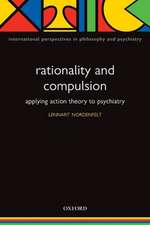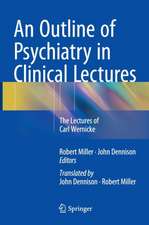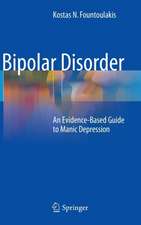The Postmortem Brain in Psychiatric Research: Neurobiological Foundation of Aberrant Behaviors, cartea 4
Editat de Galila Agam, Ian P. Everall, Robert Haim Belmakeren Limba Engleză Hardback – 30 noi 2001
This is the first book to summarize this research approach and the meaningful data which has recently been acquired.
| Toate formatele și edițiile | Preț | Express |
|---|---|---|
| Paperback (1) | 794.49 lei 38-44 zile | |
| Springer Us – 7 dec 2010 | 794.49 lei 38-44 zile | |
| Hardback (1) | 955.25 lei 6-8 săpt. | |
| Springer Us – 30 noi 2001 | 955.25 lei 6-8 săpt. |
Preț: 955.25 lei
Preț vechi: 1164.93 lei
-18% Nou
Puncte Express: 1433
Preț estimativ în valută:
182.81€ • 188.85$ • 152.14£
182.81€ • 188.85$ • 152.14£
Carte tipărită la comandă
Livrare economică 25 martie-08 aprilie
Preluare comenzi: 021 569.72.76
Specificații
ISBN-13: 9780792375548
ISBN-10: 0792375548
Pagini: 404
Ilustrații: IX, 404 p. 23 illus., 1 illus. in color.
Dimensiuni: 152 x 229 x 24 mm
Greutate: 0.73 kg
Ediția:2002
Editura: Springer Us
Colecția Springer
Seria Neurobiological Foundation of Aberrant Behaviors
Locul publicării:New York, NY, United States
ISBN-10: 0792375548
Pagini: 404
Ilustrații: IX, 404 p. 23 illus., 1 illus. in color.
Dimensiuni: 152 x 229 x 24 mm
Greutate: 0.73 kg
Ediția:2002
Editura: Springer Us
Colecția Springer
Seria Neurobiological Foundation of Aberrant Behaviors
Locul publicării:New York, NY, United States
Public țintă
ResearchCuprins
Methodology and General Findings.- 1. Psychiatric Brain Banks: Situation in Europe and Asia.- 2. Methodological and Stereological Considerations in Postmortem Psychiatric Brain Research.- 3. Imaging vs. Postmortem Receptor Studies: What You See is What You Get?.- 4. Glial Pathology and Major Psychiatric Disorders.- 5. Indications of Abnormal Connectivity in Neuropsychiatric Disorders in Postmortem Studies.- 6. Studies in the Human Frontal Cortex: Evidence for Changes in Neurochemical Markers in Schizophrenia and Bipolar Disorder.- 7. Summary of Prefrontal Molecular Abnormalities in the Stanley Foundation Neuropathology Consortium.- Schizophrenia.- 8. Macroanatomical Findings in Postmortem Brain Tissue from Schizophrenic Patients.- 9. Microanatomical Findings in Postmortem Brain Tissue from Subjects with Schizophrenia: Disturbances in Thalamocortical and Corticocortical in Schizophrenia.- 10. In Situ/Histological Approaches to Neurotransmitter-Specific Postmortem Brain Studies of Schizophrenia.- 11. Defining the Role of Specific Limbic Circuitry in the Pathophysiology of Schizophrenia and Bipolar Disorder.- 12. Dorsolateral Prefrontal Cortical Parallel Circuit in Schizophrenia: Postmortem Abnormalities.- 13. Postmortem Studies of the Hippocampal Formation in Schizophrenia.- 14. GSK-3 and WNT Markers of Neurodevelopmental Abnormalities in Schizophrenia.- Affective Disorders.- 15. Macroanatomical Findings in Postmortem Brain Tissue.- 16. Quantitative Cytoarchitectonic Findings in Postmortem Brain Tissue from Mood Disorder Patients.- 17. Phosphoinositide Signal Transduction System in Postmortem Human Brain.- 18. cAMP Signal Transduction Abnormalities in the Pathophysiology of Mood Disorders: Contributions from Postmortem Brain Studies.- 19. Monoamine Receptors in PostmortemBrain: Do Postmortem Brain Studies Cloud or Clarify our Understanding of the Affective Disorders?.- 20. Non-Monoaminergig Transmitters, Glia Cell Markers, Cell Adhesion Molecules and Synaptic Proteins in Postmortem Brain Tissue.- Concluding Remarks.





















